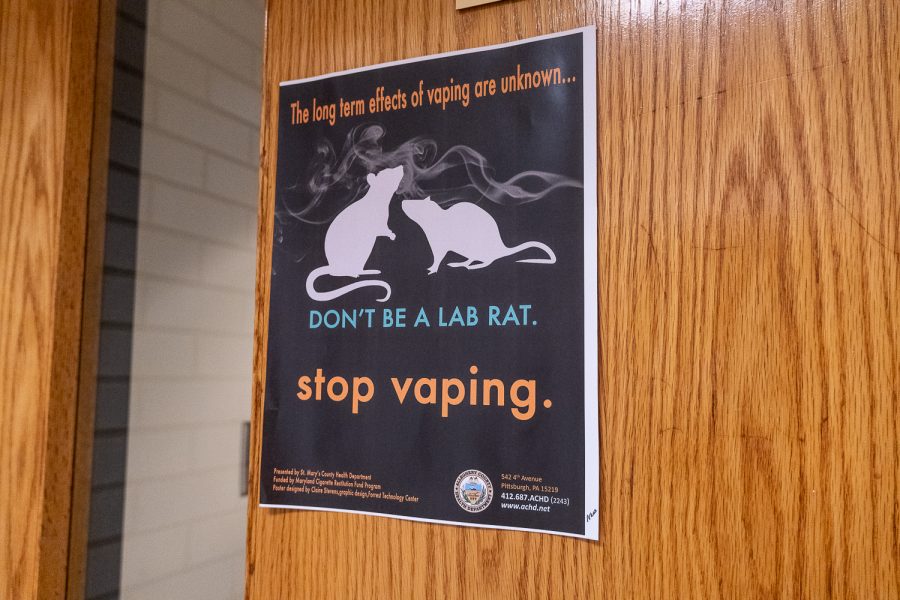Opinion: Clear the Air
Teen vaping use is on the rise again.
The anti-vaping poster on the door of the NASH Main Office alerts students to a serious risk: researchers have yet to determine the long-term side effects.
October 19, 2022
You may not see it but you can certainly smell it — teenage vaping is back, and it has become an issue not only at NASH but across the country.
Back in my elementary school gym class, I remember how we spent multiple days a year learning about what horrible things smoking would do to our lungs. We were taught that smoking and tobacco use were the enemy of all enemies because of a substance called nicotine. We were supposed to be the first “smoke-free generation.”
That was until the Juul was invented in 2015, right before the class of 2023 entered middle school, and Juul bagan marketing towards a younger audience. Originally, e-cigarettes and vapes were marketed to assist smokers in quitting, but it was not long before manufacturers began producing flavored e-cigarettes and targeting the teen population.
In 2002, Pennsylvania changed the legal age to purchase tobacco and nicotine products from 18 to 21 with a goal to decrease drug use in younger people. Nevertheless, vaping among high schoolers has exceeded the rates of the adult population. In 2019, 24.4% of high school students in PA used e-cigarettes, compared to only 4.2% of adults in 2017.
Although e-cigarettes were created to assist those wishing to quit smoking cigarettes, vaping is not any better for you than smoking a cigarette. One Juul pod contains 40 milligrams of nicotine which is equivalent to the amount of nicotine in one pack of cigarettes.
The rise in teen nicotine consumption is not only illegal but also also detrimental to young people’s health. Vaping increases blood pressure and spikes adrenaline, which increases the risk of a heart attack.
Nicotine is notoriously addictive, and that means it is also costly. On average, a regular consumer of e-cigarettes and vapes spends about 65 dollars per month on the said products. However the average smoker spends about 807 dollars a month on cigarettes, with the average pack of cigarettes in the United States costing about eight dollars.
What is worrisome is that medical professionals and scientists are not aware of the long-term effects of vaping and using e-cigarettes. Studies remain inconclusive, and therefore the risks are high.
There is a potential connection between vaping and deteriorating mental health, as the side effects of vaping include increased depression and anxiety. The chance that someone who vapes is diagnosed with depression is two times that of person who does not vape.
Although the FDA acknowledged the dangers and banned Juul product sales, teenage vaping is on the rise.
We were taught to be the first smoke-free generation, yet too many teens today decide to put themselves at risk. It is frustrating and upsetting to hear of young people with so much opportunity in their lives risk their health for an addictive substance.
So this month, among all of the necessary awareness directed to breast cancer research, remember that it’s also National Substance Abuse Prevention Month. Nicotine may seem harmless in the short term, but over time its addictive grasp can set us on a path we’ll wish we’d never gone down.












